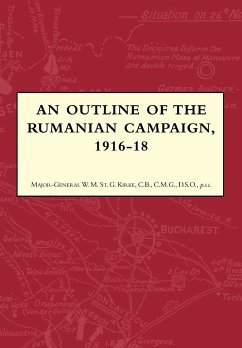Rumania joined the Great War on the Allied side in mid-1916 - tempted by an Allied promise to give her post-war sovereiginity over the territory of Transylvania, then part of the Austro-Hungarian Empire. However, Rumania must have quickly repented its participation. Although it had an army of half-a-million men, its officer corps was ill-trained and it faced a formidible foe in Germany's General Erich von Falkenhayn, the architect of the offensive against Verdun earlier that year. This book describes the swift campaign which began with Rumania launching attacks against the Austrians across the Carpathian mountains into Transylvania. General August von Mackensen, leading a mixed force of German, Austrian, Bulgarian and Ottoman Turkish troops, struck back with a counter-attack from northern Bulgaria in September, and the Rumanians suspended their Transylvanian operation to deal with Mackensen in a joint operation with the Russians. However, the Rumanians were soon in full-scale retreat on all fronts, and despite desperate last-ditch counter attacks, the capital Bucharest fell on December 6th. In 1917, the remaining Rumanian troops in the northern half of the country which remained free of German occupation beat off repeated enemy offensives. But the Bolshevik takeover of Russia later that year left Rumania isolated and surrounded by its foes, leaving it little choice but to conclude an Armistice removing it from the war in December 1917. Profusely illustrated with maps, this brief description of a short campaign fills in a forgotten corner of the Great War.
Hinweis: Dieser Artikel kann nur an eine deutsche Lieferadresse ausgeliefert werden.
Hinweis: Dieser Artikel kann nur an eine deutsche Lieferadresse ausgeliefert werden.








